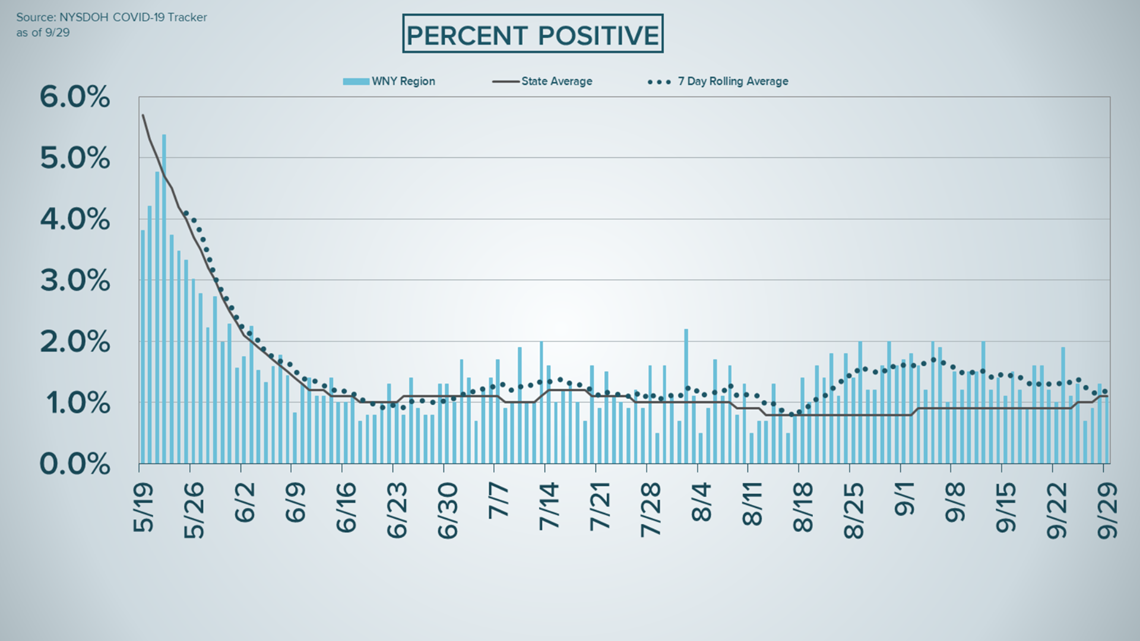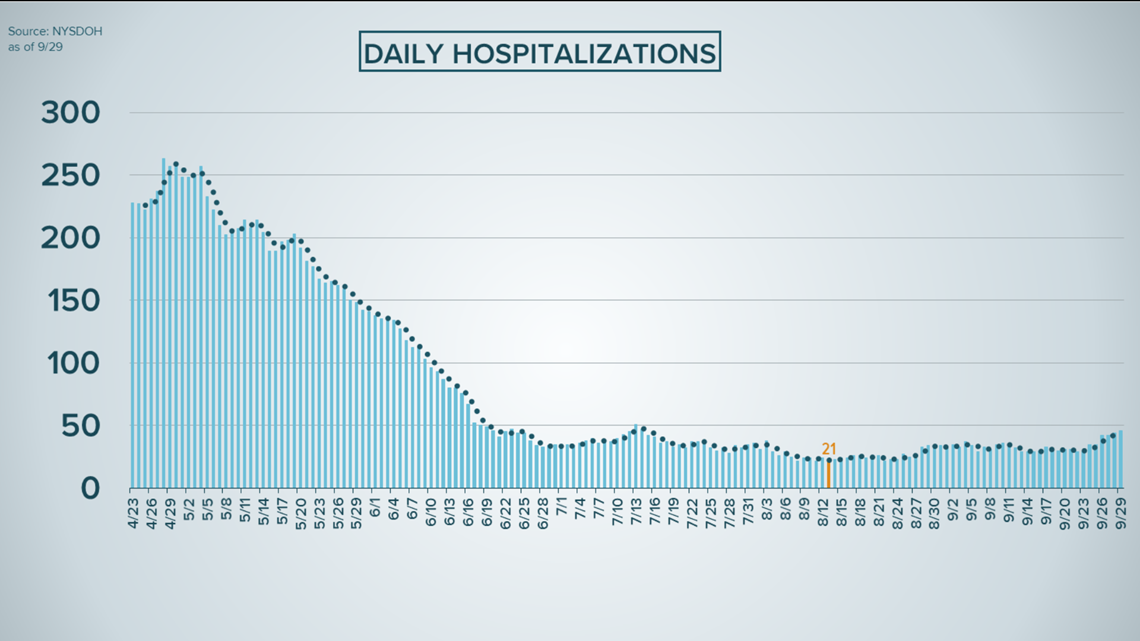BUFFALO, N.Y. — According to new data from New York State, the percent of tests that were positive for COVID-19 in the Western New York Region on September 29 was 1.1%.
Out of 7,211 test results Tuesday, 76 were positive for the virus. That matches the current seven-day average for the state and is slightly below the current average of 1.2% in the region.
The Western New York Region includes Erie, Niagara, Chautauqua, Cattaraugus and Allegany counties.
New York Governor Andrew Cuomo says there is still a caution flag over the region due to the high COVID-19 infection rate.


Daily Hospitalizations in the WNY Region increased to 46 on Tuesday. That’s up from 44 the day before, and it’s the fourth consecutive day that more than 40 people were hospitalized with the virus in the region. Before this increase, hospitalizations had been below 40 since July 17.


Human coronaviruses are usually spread through...
• The air by coughing or sneezing
• Close personal contact, such as touching or shaking hands
• Touching an object or surface with the virus on it, then touching your mouth, nose or eyes before washing your hands.
Help stop the spread of coronavirus
• Stay home when you are sick.
• Eat and sleep separately from your family members
• Use different utensils and dishes
• Cover your cough or sneeze with your arm, hot your hand.
• If you use a tissue, throw it in the trash.
Lower your risk
• Wash your hands often with soap and water for at least 20 seconds. If soap and water are not available, use an alcohol-based hand sanitizer.
• Avoid touching your eyes, nose, and mouth with unwashed hands.
• Avoid close contact with people who are sick.
• Clean and disinfect frequently touched objects and surfaces.
• If you are 60 or over and have an underlying health condition such as cardiovascular disease, diabetes or respiratory illnesses like asthma or COPD, the World Health Organization advises you to try to avoid crowds or places where you might interact with people who are sick.

